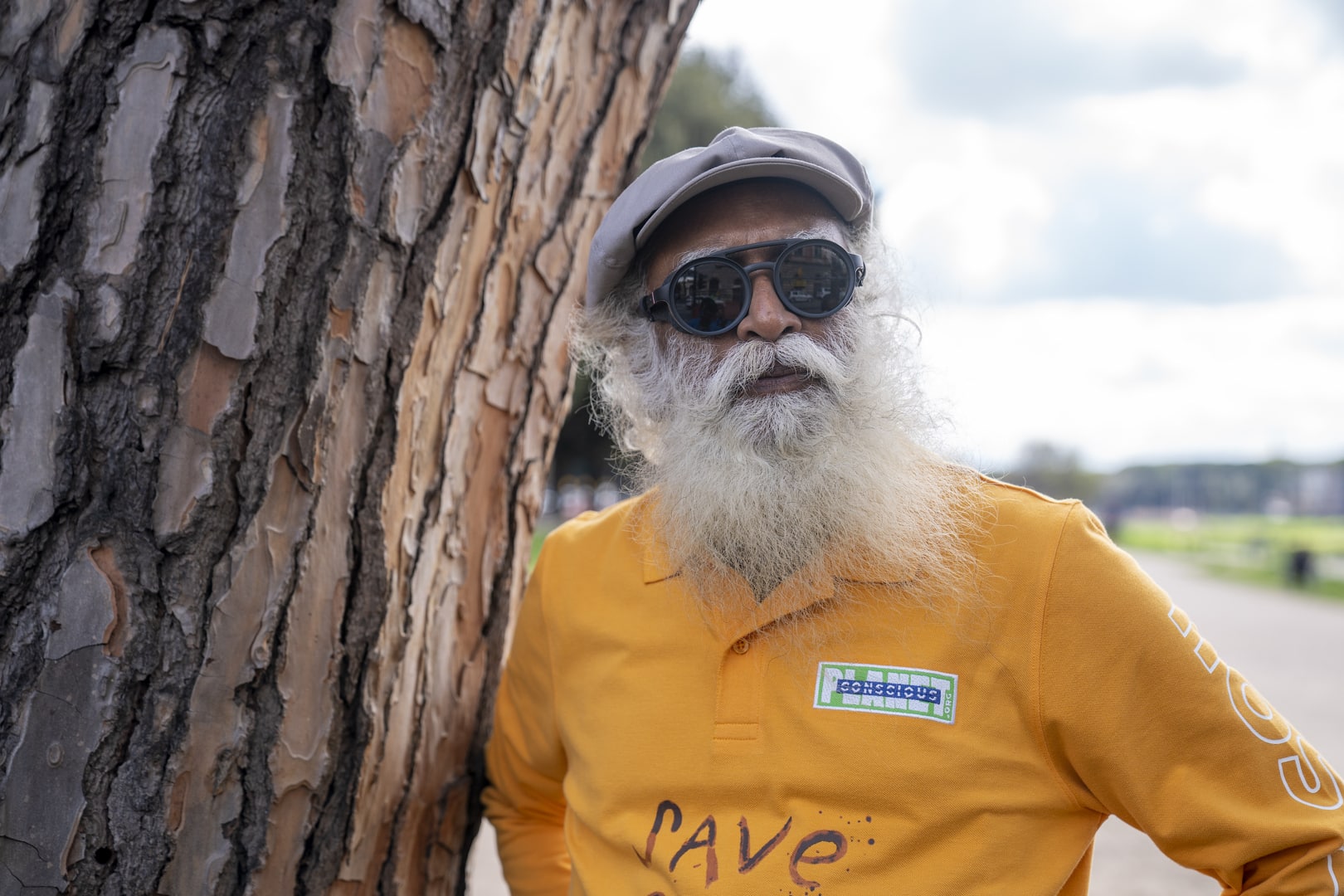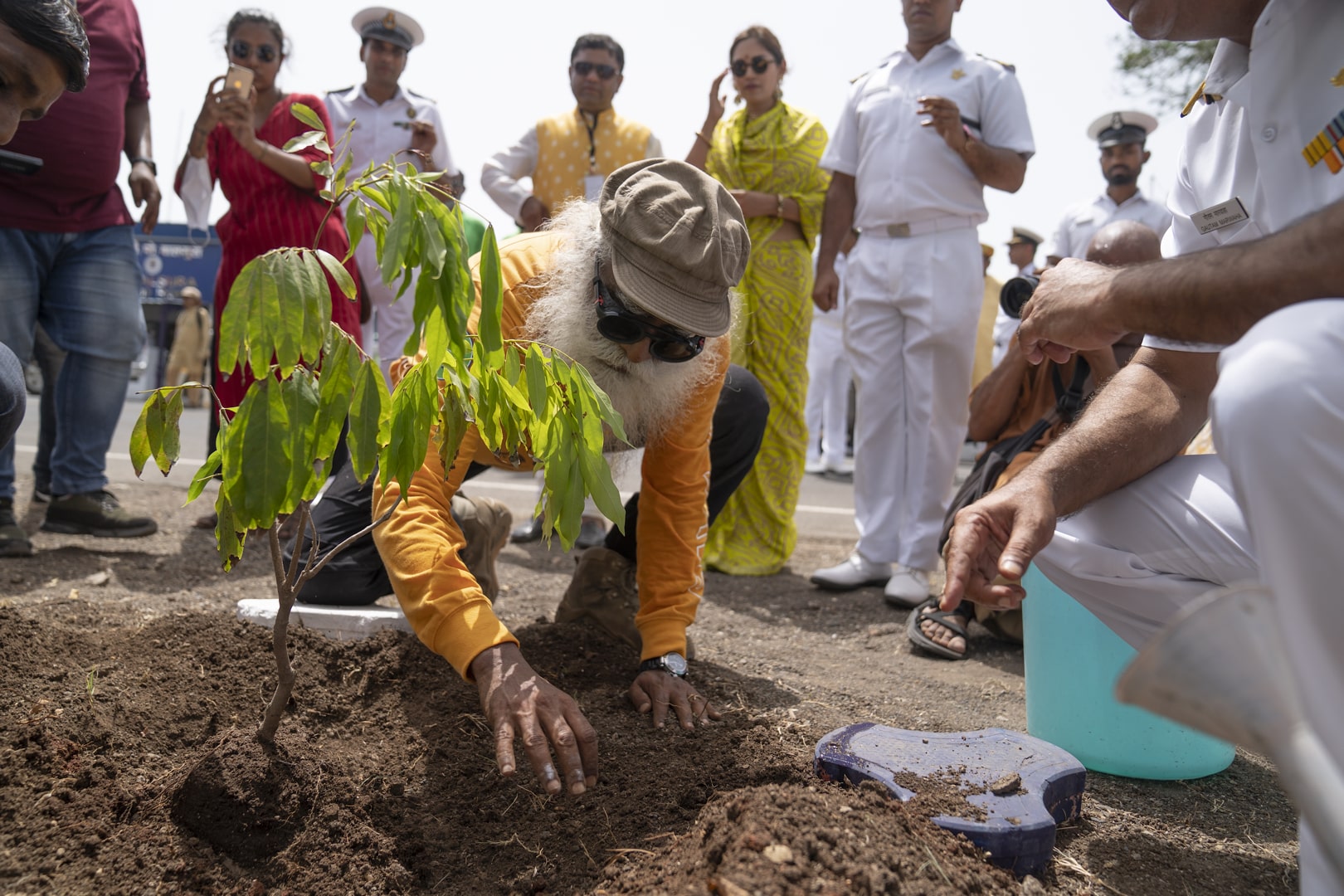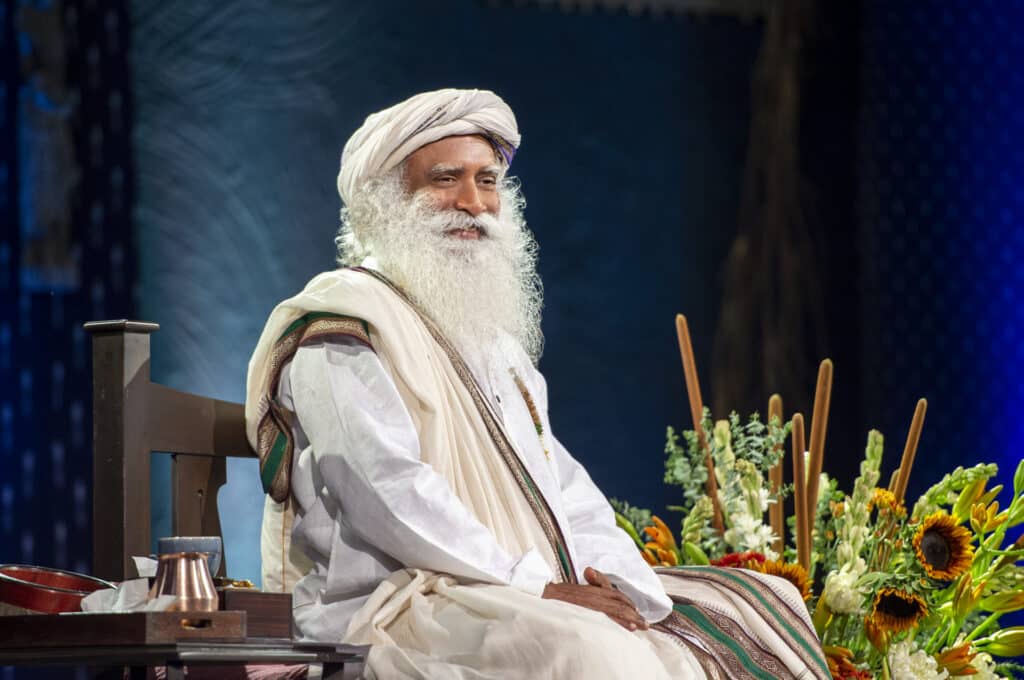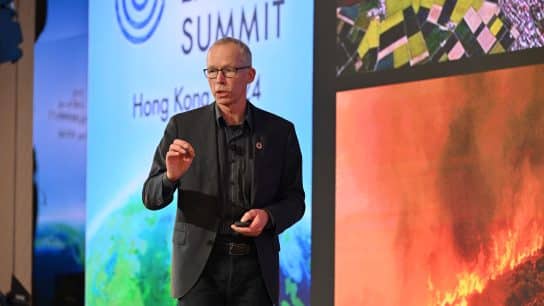Yogi, bestselling author, and environmental advocate Sadhguru is undoubtedly one of the most influential people of our times. Besides establishing the world-famous non-profit spiritual organisation Isha Foundation, he is also the face of Save Soil, a movement to address the global soil crisis. In an exclusive interview with Earth.Org, Sadhguru discusses what inspired him to bring together people from around the planet to discuss the importance of soil, and what he has learned from his 100-day, 30,000-kilometre journey to meet government officials and inspire them to protect one of Earth’s most important resources.
—
No matter where we are in the world, climate change is unfolding before our eyes. We are warming our planet at an unprecedented rate and, if left unchecked, the social, environmental, and economic consequences of our reckless actions will soon become irreversible. Thankfully, with the implications of a rapidly changing climate becoming more apparent every day comes a sense of urgency and motivation to take action.
When it comes to climate change, discussions overwhelmingly focus on the fossil fuel industry. While there is enough scientific evidence to support the idea that oil and other planet-warming fuels are the main culprits of our planet’s deterioration, radical changes are equally needed across other sectors. Among the too often overlooked topics is soil degradation.
As part of Earth.Org’s mission to raise awareness about the need to revolutionise the way we go about life and advocate for change, we turned to world-renowned yogi, bestselling author, and environmental advocate Sadhguru, who recently completed a 100-day, 30,000-kilometre journey from London to southern India to meet with government officials, international organisations, and interested members of the public to address soil degradation and the associated impacts.
Why Soil?
52% of the planet’s agricultural soil is degraded and if business as usual continued through 2050, the United Nations projects additional degradation of an area almost the size of South America. But there is more to it. If we do not change our reckless practices and step up to preserve soil health, food security for billions of people around the world will be irreversibly compromised, with an estimated 40% less food expected to be produced in 20 years’ time despite the world’s population projected to reach 9.3 billion people.
Before diving deeper into the solutions, we must first understand why soil is such a valuable resource for our planet.
1. Soil is one of Earth’s biggest carbon sinks
Soil is the largest active store of carbon next to the oceans, holding more carbon than land vegetation and the atmosphere combined. This makes it a great asset in limiting global temperature rise and mitigating changes in our climate. Carbon sinks extract carbon dioxide from the atmosphere and can absorb more carbon than they release. They cover about 30% of the Earth’s land surface and as much as 45% of the carbon stored on land is tied up in these sinks.
Organic matter is a crucial component of soil as it allows it to absorb carbon from the atmosphere. Plants absorb CO2 from the air naturally and effectively through photosynthesis and part of this carbon is stored in the soil as soil organic carbon (SOC).
“For any soil to have agricultural potential, it must have a minimum of 3-6% organic matter,” explained Sadhguru. However, the content across the world is much lower than that.
“Average organic content is about 1.48% in northern Europe, 1.1% in southern Europe, 1.25–1.4 % in the United States, 0.68% in India, and 0.3% in Africa [and] in large parts of the world, it is well below 1%.”
The problem arises when soil is plowed and exposed, as it effectively turns into a source of carbon.
Recalling his 30,000-kilometre journey through Europe, the Middle East, Central Asia, and India, Sadhguru described bad practices that have left soil exposed and vulnerable to degradation.
“All along in Europe, I saw that most of the farmlands did not have any crops because it was post-winter. But all the lands were plowed and left open. This is the worst thing you can do to the land because when you plow it and leave it open, microbial life dies.”
All microbial activity sits in the first 12-15 inches (30-38cm) of soil, and as little as a handful of healthy soil can contain anything between 5 to 7 billion organisms. The issue is that, nowadays, machines are plowing 12-14 inches deep, leaving the soil open for months on end.
“This is not happening in one country or region – we have taken to this across the world. It is not good.”
Indeed, life beneath the soil, including all worms, insects, and microbial organisms, is designed to survive in the shade. Scraping the first layer of soil means leaving it exposed to harsh summer sunlight, which can rapidly kill all organisms living in it.

Yogi, bestselling author, and environmental advocate Sadhguru recently completed a 100-day, 30,000-kilometre journey from London to southern India to meet with government officials, international organisations, and interested members of the public to address soil degradation and the associated impacts. Photo: supplied.
2. Soil and human health are interconnected
“Soil is connected to human health, both in terms of physiological and psychological health [and there are] substantial studies today to support this claim,” said Sadhguru when asked whether he sees a link between mental well-being and the soil crisis.
Indeed, microbial life in the human gut is an essential factor for proper food digestion and nutrient absorption. Moreover, certain microbes in the gut, known as mycobacterium vaccae – a soil-based microorganism that can be easily found in edible plants – are responsible for generating serotonin, a critical neurochemical that helps with mental balance and improves cognitive functions, acting in a similar way to antidepressants.
Industrial-scale agriculture and reckless human activities are to blame for leading to large-scale soil degradation across the globe. These include industrial pollution, excessive mining and farming, and unregulated waste management, all of which are directly linked to soil pollution as they release pollutants such as metals, cyanides, pesticides, and organic chemicals such as Polychlorinated biphenyls (PCBs), a group of man-made chemicals that can generate harmful by-products such as dioxins under combustion.
According to a UN report published in 2021, the annual global production of industrial chemicals has doubled since 2000 to 2.3 billion tonnes and is projected to increase by 85% by 2030.
“We are ripping open the soil and making sure all the microbial life dies,” Sadhguru said. “[Only by] preserving the quality of the soil [can] the quality of life endure. If you have living soil, both physical and mental health will be at their best.”
How Do We Keep the Magic of Soil Alive?
When looking at the benefits of healthy soil and the current rate of degradation, the urgency of introducing policies to restore a minimum of 3-6% organic matter in agricultural soil becomes apparent.
Last year, Sadhguru embarked on a journey to meet lawmakers, scientists, and business leaders with the sole objective of spreading awareness about the global movement Save Soil and achieving its goal of supporting governments in implementing policies for soil rejuvenation and conservation. This, he argues, can only happen by implementing a three-pronged strategy.
“Firstly, governments of the world need to incentivise farmers to raise the organic matter in their soil. Secondly, [they] must simplify the carbon credit market so that it is accessible to the farmers. The third part of the strategy calls for market recognition and valuation of the produce as per the organic matter of the soil which it comes from. If these three actions are implemented, we can easily achieve 3–6% organic matter in the soil. This is the way forward.”

The Save Soil movement addresses the soil crisis by bringing together people from around the world to stand up for soil health, and supporting leaders of all nations to institute national policies and actions toward increasing the organic content in cultivable soil. Photo: supplied.
Reflecting on the powerful and meaningful conversations he had with thousands of change-makers, Sadhguru said he is confident that real change is coming.
“No industry is against making the soil rich. No government is against it. Not one person has said anything negative about Save Soil. Everyone says ‘This needs to happen.’ The whole world knows that soil must be revitalised [and] I am very sure that policies will definitely be implemented almost everywhere. It is only a question of managing the pace.”
It’s Time to Act
Since March 2022, Save Soil has touched over 4 billion people and has received the support of several United Nations agencies, including the United Nations Convention to Combat Desertification (UNCCD), the United Nations Environment Programme (UNEP), World Food Programme (WFP) – as well as the International Union for Conservation of Nature (IUCN). 81 countries are currently in the process of framing soil policies.
“That is the kind of response from every part of the world, because everyone knows this needs to happen. Everyone knows there is a serious problem and everyone knows what the general direction of the solution is. They have just been waiting for an idiot to bell the cat. So, here I am. Let us make it happen.”
Featured image: supplied
You might also like: Nature Credits Can Succeed Where Carbon Capture Technologies Failed: An Interview with Walid Al Saqqaf and Amit Ghosh


















